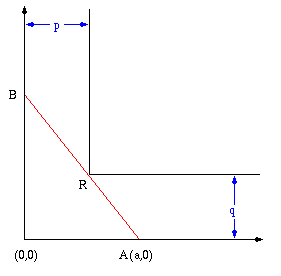Hello Rich,
Ask and you shall receive....
You are walking down a long straight corridor that is 2 meters wide. You reach another corridor that branches off at a right angle. You enter this corridor, and find it is 4 metres wide. What is the longest straight rod that can be carried horizontally around the corner from the 2 meter corridor into the 4 metre corridor?
This question of course is open to all forum members who enjoy a good puzzle...
Ron.
Ask and you shall receive....
You are walking down a long straight corridor that is 2 meters wide. You reach another corridor that branches off at a right angle. You enter this corridor, and find it is 4 metres wide. What is the longest straight rod that can be carried horizontally around the corner from the 2 meter corridor into the 4 metre corridor?
This question of course is open to all forum members who enjoy a good puzzle...
Ron.



